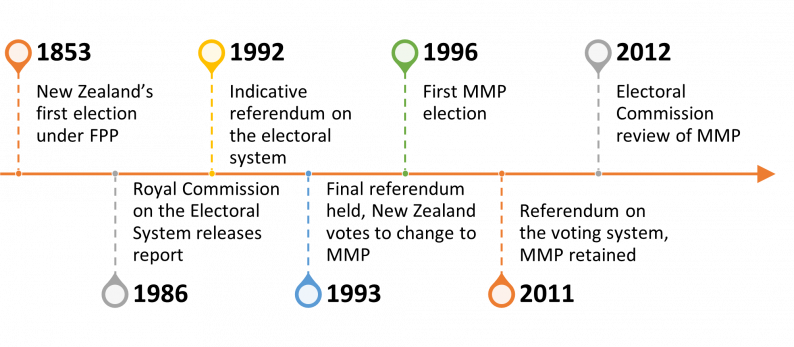New Zealand’s first election was held in 1853. 37 MPs were elected to the House of Representatives using the First Past the Post (FPP) electoral system.
First Past the Post
Once FPP became established in New Zealand, voters had one vote for an electorate candidate and the candidate with the most votes won the seat. The party with the most seats in Parliament became the government.
FPP is used widely overseas, including in the UK, Canada, India and the United States.
Growing voter dissatisfaction
Single-party governments were a feature of FPP in New Zealand.
By the 1970s and 1980s there was growing disillusionment with an electoral system dominated by two major parties. The party with the most votes did not always win the election and smaller parties found it difficult to win seats in Parliament.
For example, National won the most seats in the 1978 and 1981 elections, but Labour had a larger share of the votes. Social Credit won 16% of the vote in 1978, but only one seat in Parliament. In 1981 it won 20.7% of the vote but only got two seats.
Election results prior to 1993 are available on our website.
Reviewing the system
Over the following years, steps were taken to review the system. These steps included a Royal Commission and two referendums.

More on the history of MMP
There’s more information on the Royal Commission, the MMP referendums and the reviews of our electoral system on our website.
A Royal Commission and two referendums
You can also find information on Te Ara – The Encyclopedia of New Zealand, and on NZ History.
Te Ara: Parliament - Te Ara: The Encyclopedia of New Zealand
The road to MMP - New Zealand History
